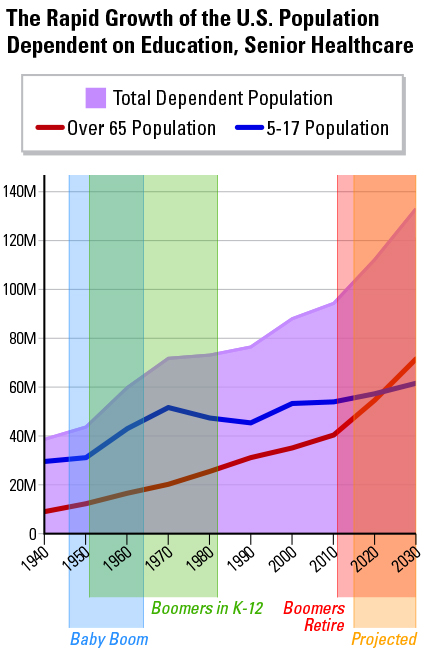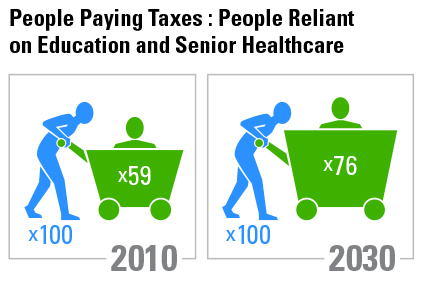School Choice Could Alleviate Worry from New Population Trend
In 2030, the population of people dependent upon our most expensive tax-funded services—education and senior healthcare—likely will be the highest it’s ever been in American history.
Those increases in population will occur for a couple reasons: 1. Baby Boomers are retiring, and 2. The K-12 student population will continue to grow, exceeding that of the Boomer student populations once heralded as the nation’s largest generation.

Who is responsible for funding senior healthcare and K-12 education in that time and beyond? The kids in classrooms right now.
A new report released by the Friedman Foundation for Educational Choice in partnership with the Foundation for Excellence in Education utilizes U.S. Census Bureau data to bring to light this historical population trend and examines what it could mean for our country’s future. For instance, when 64 percent of public school eighth graders today can’t read at full proficiency, will they be ready to financially support the record high numbers of tomorrow?
It is indeed uncertain. But what is likely is America’s “age-dependency ratio,” depicted in the graphic below, will continue to grow:

As the report’s author notes, “Broadly speaking, the age-dependency ratio measures the number of people riding in the cart compared to the number pushing the cart.” Those figures demonstrate just how important it is that policymakers find solutions now—while there’s still time—to improve our current students’ educational experiences and opportunities.
Expanding school choice for all families would shift how we presently fund public education from the “taxes -> public schools only” model to a “taxes -> families (in the form of education savings accounts (ESAs) or flexible vouchers) -> one or many educational options” model. Existing ESA programs have been shown to greatly increase parents’ satisfaction with their children’s schooling and save the state money. This type of school choice quickly and effectively allows more families to access the multitude of learning options available and, thus, customize their education. It should be one piece of the education improvement solution on which we all can agree.
For more information and to read the full report, visit edchoice.org/FaceTheStrain.




